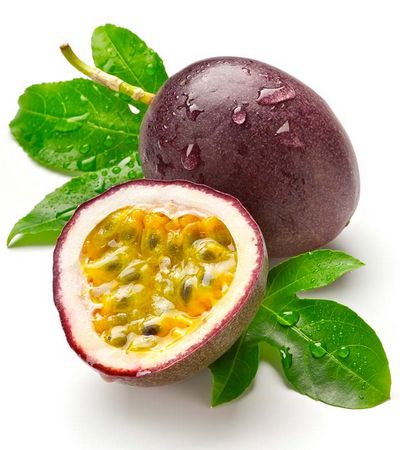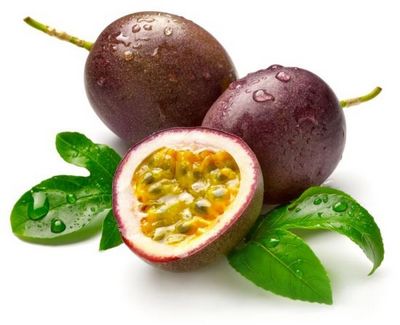Passiflora edulis is wild vine species of passionflower native to south Brazil through Uruguay and northern Argentina.

It is grown commercially in tropical regions for its delicious, juicy fruit, usually called passionfruit. It can grow wild and be found in the rainforests of Amazon, Congo Basin, Madagascar, Mexico and Venezuela.
Passion fruit has been used for centuries by the Incas, Aztecs and Mayans in Central and South America for both medicinal and spiritual purposes. The fruit contains potent ingredients such as tropine oxide (which enhances blood circulation) and caffeic acid (which increase the metabolism rate of the body), all of which are known to relieve symptoms of arthritis and diabetes. In some cases, this fruit has also been shown to reduce the risk of heart attack and stroke by inhibiting platelet aggregability and decreasing platelet activity.
Passion fruit’s health benefits have also been recognized by western medicine. Passionfruit is believed to boost sexual performance and to increase libido. It is an aphrodisiac and sexual tonic. Passion fruit is also believed to reduce breast cancer risk in women.
Passionflower, the fruit from which passionfruit is derived, grows only in the humid, tropical climates of south central Brazil. It has a large seed that can reach a height of up to 15 inches. The seed has two strata, the plant’s way of storing water and food.

Each stoma has a valve at the top that opens when the strata beneath it are wet and closes when the stoma is dry.
The fruit has two seeds. The interior seed is smaller than the exterior seed. The inside seed is usually black or green in color and has a sweet taste. The outer seed is reddish in color and is usually smaller in size.
The fruit has a shelf life of up to ten years. However, it is best kept fresh at room temperature.
Passionfruit fruits are available all year around but do not grow very well in colder climates. They are best eaten right after picking and should be stored in airtight containers. during winter. They should be chilled prior to consumption. Otherwise, storage at room temperature will result in a mushy fruit that does not hold its flavor well.
Passionfruit is high in fiber and has a high level of potassium. As a dietary supplement, it is beneficial for reducing cholesterol and helps prevent constipation.

It is also rich in vitamin B and vitamin C, two nutrients that help prevent bone and joint injuries.
The flesh of the passionfruit’s skin contains vitamin A and potassium. It also has many vitamins A and E, essential fatty acids, and carotenoids that protect the heart, help to prevent inflammation, and lower the risk of stroke and heart disease. It also contains phytosterols, a type of antioxidant, and fiber. These nutrients help to reduce the risk of gall bladder disease and reduce blood pressure.
Passionfruit has other health benefits. It is high in protein and can be used in cooking as an ingredient for soups and stews. It is also effective in lowering cholesterol and increasing high-density lipoproteins, which lower the amount of bad cholesterol in the body.
In addition to its many health benefits, passionfruit is considered to be an excellent choice for diabetics. It helps regulate blood sugar levels and increase glucose metabolism.
Due to the fruit’s antioxidant content, it can also help combat free radicals in the body and provide a protective shield against environmental toxins. It can reduce the effects of oxidative stress in your body and is considered to be an effective antioxidant in combating the aging process and cancer.
Passionfruit has no side effects. It is a low-fat, high-fiber, low-calorie, and delicious fruit. Its ability to provide the body with antioxidants helps prevent and treat diseases and illnesses by preventing cell damage.